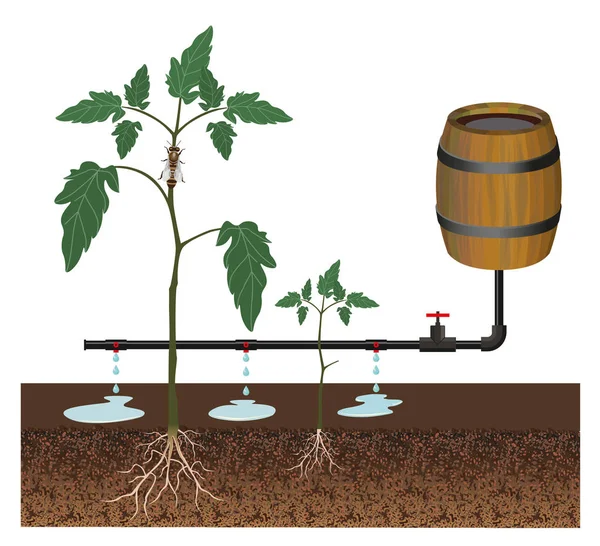There are many options to maintain a beautiful landscape and ensure that you don’t squander water. One way is by using drip irrigation, which helps in the maintenance of your plants while helping prevent over-sight from occurring in places that are difficult for people who reside there for a long time, such as desert areas or areas at high altitudes because they have only a limited amount of rainfall each year, so this kind of system will work best. While a well-maintained lawn can make a home look great, too much sun exposure can be detrimental to plants at higher elevations.
What Is Drip Irrigation, You Ask?
Irrigation is essential for plant care. It can be done in many ways. One method is to attach micro-sprinklers to the ends of the tube. This will allow the plants to be watered quickly and gently after draining them for extended periods without any rain. The fixture can be placed on top of the soil however, make sure to bury it slightly underground. This is due to the fact that we require all the space between the rootzone (and any exposed pipe or cable) before fluids are passed through.

Drip irrigation offers many benefits
Drip irrigation can be efficient, cost-effective and can save water! It also reduces or even reduces or eliminates evaporation, ensuring your plants remain healthy regardless of how dry the environment may be. This method is perfect for those areas with hot and windy weather. It stops vital fluids from getting lost. Gardeners can be annoyed when they are not able or unwilling to take care of all of their needs, including drinking water.
Drip irrigation offers numerous advantages over traditional sprinklers. Control is the most important. The pipes can be precisely placed so that they water only the plants you require.
For more information, click drip tape price
What is the best place to be used?
It is important to consider your soil type before deciding if drip irrigation is right for you. It is good to know that most kinds of ground can be converted to drip irrigation without difficulty. However, there are some exceptions like clay-based soils that require adjustments for an order for water retention capacity and sandy loams that might require stronger emitter settings so as not to have pools appear over the top of the soil due to excessive moisture absorption from the low pressure gauge settings. To ensure each drop flows effortlessly through the plumbing fixtures and to ensure that your landscapes are free of density enrichments such as sandstone paths.
Although you desire to keep your yard beautiful but it’s not something that can be easily accomplished. This can be challenging because you want the best space for entertaining friends as well as relaxing after a tiring work day. Before you can decide if drip lines should be installed in flower beds or close to the sidewalks during rainy conditions, you need to consider which kind of irrigation system will work best.